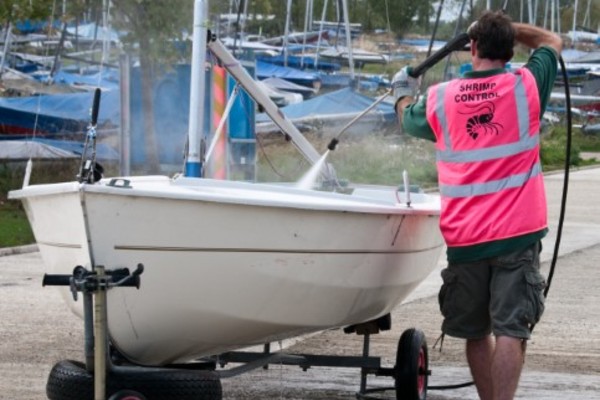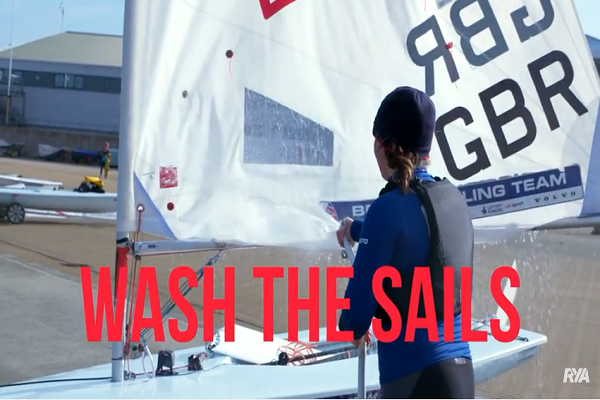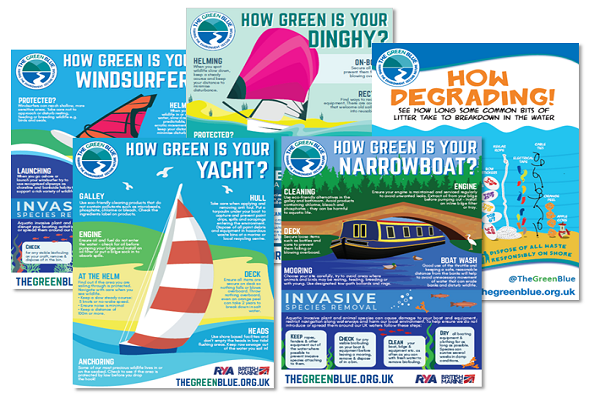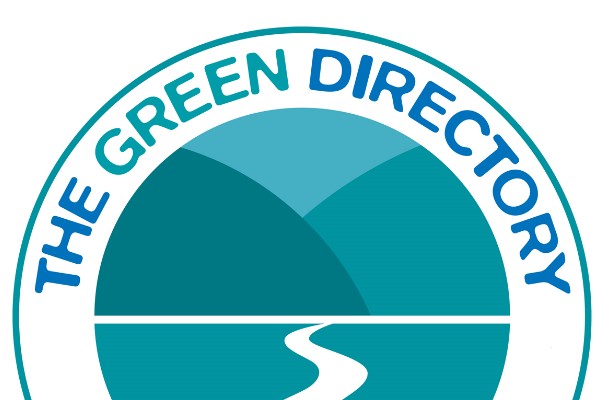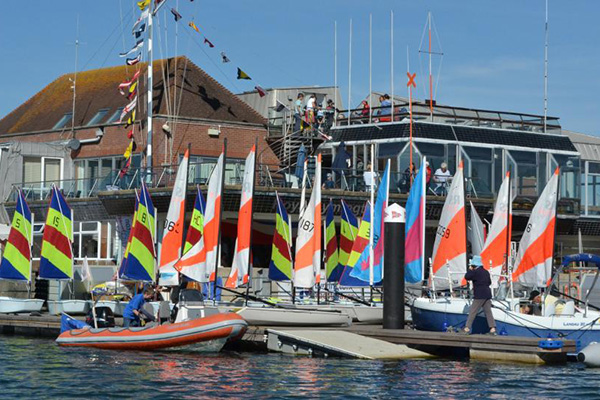Biosecurity
BACKGROUND
Biosecurity are the actions carried out to minimise the risk of invasive non-native species (INNS). A non-native species is any wild species that has become established outside of their normal habitat. Some non-native species are completely harmless but others, known as invasive or alien species, have the ability to cause damage to the environment, the economy, our health and the way we live. Biosecurity is essential to minimise risks associated with invasive species in order to protect our waters and native wildlife.
WHAT IS THE PROBLEM?
Invasive non-native species (INNS) can be transported to Great Britain in a number of different ways including by shipping vessels, aquaculture industries, and accidental/intentional release and even by being swept across an ocean on currents. They can also be transported from place to place by hitching a ride on boat hulls, anchors and propellers, or being carried in ballast and bilge water.
The spread of invasive species is becoming a major issue in both marine and inland waters around the world because they compete with native plants and wildlife and can cause major changes to entire ecosystems.
As well as the devastating environmental impacts, invasive species can spread disease, restrict navigation, block waterways, clog up propellers and add significantly to the management costs of our waterways.
Recreational facilities can also suffer as a result of these invasive species, as well as the boating community who may face restrictions on accessing certain waters.
Fast-growing species like Zebra Mussels are already causing problems in many areas, blocking engine cooling water intakes resulting in engines over-heating. Didemnum Vexillum, known as the Carpet Sea Squirt, has a smothering effect; covering aquatic habitats in thick sheet-like growths and interfering with fishery and aquaculture operations. Once established, non-native species become extremely difficult and expensive to eradicate.
For more information on how non-native species can affect biodiversity, human health and the economy, read this informative article by the European Environment Agency.
Identifying Invasive Species
It’s not always easy to identify these species, but the GB Non-Native Species Secretariat Information Portal contains details of over 3000 species to help.
LEGAL REQUIREMENTS
By showing that the boating community is taking a proactive stance, we aim to hopefully avoid potentially mandatory measures being introduced to control the spread of INNS, which would directly impact the sport.
The management of INNS can already be found in UK legislation:
The Wildlife and Countryside Act 1981 and the Natural Environment and Rural Communities Act (NERC) 2006 are the key laws that tackle the threat of non-native species and their impact on the UK ecosystems. These acts make it an offence to release into the wild any animal, plant or micro-organisms not ordinarily resident to the UK or which constitutes a known threat; it bans the sale of invasive species, and provides the Secretary of State with additional powers to issue or approve codes relating to non-native species.
In 2016, the RYA was commissioned by the Council of Europe to develop a European Code of Practice on Recreational Boating and Invasive Alien Species to ensure that the recreational boating community is playing its part to stop the spread across Europe. It was adopted by the Bern Convention in November 2016.
AWARENESS RAISING
To help you raise awareness there is a selection of free resources available – tailored for coastal and inland sites:
- Request our Check Clean Dry Awareness Kit from our Resources page. The kit contains hard copy materials to display at your site:
- Posters and leaflets
- Outdoor metal signage
- Include a section on your website to display your biosecurity policy, CCD posters and a link to The Green Blue’s online boat user biosecurity guidance.
- Use our digital resources (Check Clean Dry posters, video guides, written green guides and info-graphics) to help communicate biosecurity. These can be embedded or linked to in your social media, newsletters or on your website.
- Support the national Invasive Species Week in May, through your media channels.
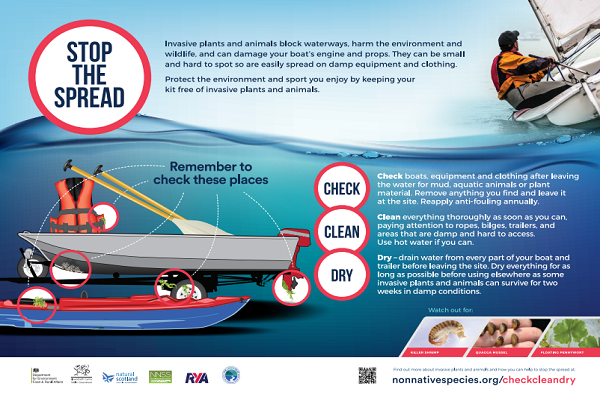
BIOSECURITY OPERATIONS
Staff and Volunteer Training:
Train your site staff and volunteers in the Check, Clean, Dry procedures and include this within their role/duty description.
Operating Boats on the Water:
- Boat users should avoid sailing or motoring through water plants and weed if possible. This brings the boat/craft into contact with vegetation increasing the risk of INNS attaching and getting caught up on the hull or propeller, further helping to transfer them between water bodies.
- After anchoring, visible biofouling should be removed from the anchor and chain and where possible washed with clean tap water before stowing away. This is so any INNS that may have attached will be left at the anchorage site and not spread to a new site next time the anchor is used.
Submerged Static Structures:
- Any structures or equipment such as pontoons, piles and buoys which have been submerged in water for a time also pose a higher risk of spreading invasive species and so extra care should be taken when moving or working with them.
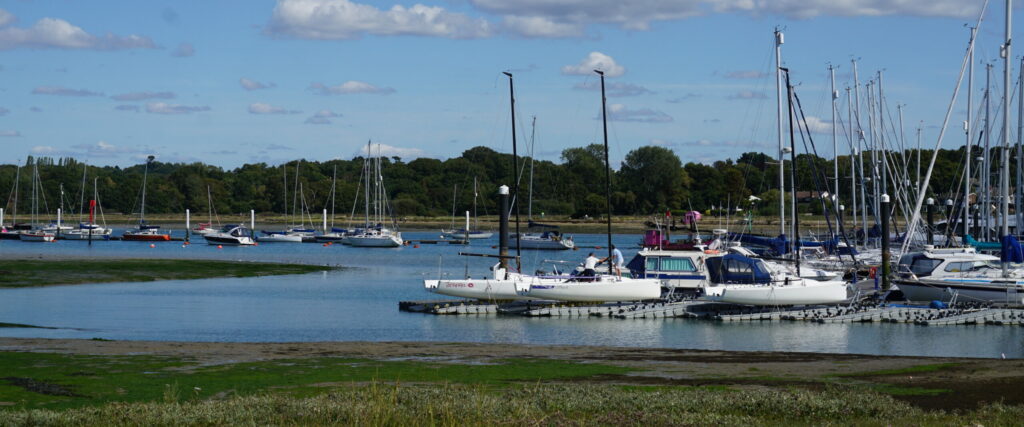
Boats Kept on the Water During the Season:
- After being out on the water and returning back to a mooring, pontoon or jetty for example, it is important for equipment and gear to undergo the Check Clean and Dry process.
- When not in use, ensure boat equipment is raised out of the water (including outboard engine propellers, ropes and fenders) to minimise the risk of species attaching.
- Whilst boats are on the water, hulls should be cleaned regularly to remove algae with a soft brush or sponge to help prevent the build up of biofouling and growth of INNS. This will also save on time, effort and money having it cleaned off.
- If bio-fouling can not be wiped off using a soft brush or sponge whilst on the water, it needs to be lifted and scrubbed onshore.
- An appropriate anti-fouling coat system and good maintenance are the best way of preventing biofouling accumulation if boats are remaining in the water. please visit our Antifouling advice for boat owners.
Boat Storage on Site:
- If possible always recover and store any boats or craft on land until its next use, as this will help minimise the risk of INNS attaching if left in the water.
- Store boats and outboard engines in a location where any run-off does not drain into a water body (e.g. drains, gullies or rivers).
- Return any engines to their vertical down position to drain.
- Use the general waste bin to dispose of any plant or animal material found in prop bags or other equipment.
- Towel dry your boat/craft where possible after washing with clean tap water and leave to air-dry in sunlight for as long as possible before putting covers on. Dry conditions and UV-rays helps to minimise the survival of aquatic invasive species that might still be invisible to the eye.

